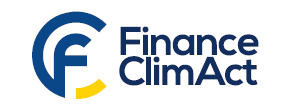We provide a detailed technical report with an in-depth analysis of two collective impact mechanisms usable on public (secondary) markets that would not be as effective if done by single investors (even the largest ones): price signalling and engagement. It discusses the narrative underlying the use of those mechanisms and conditions under which they can turn effective to make a positive difference.
Moreover, we developed two summary briefings with the key findings including lists of “impact success factors” we could derive from the literature review and practical recommendations for investors to maximize their impact potential through collective action as well as for managers of coordination devices (ESG labels, ESG indices, proxy advisors, etc.) to improve their offering.
Regarding collaborative engagement, we have noted an ongoing shift of corporate ownership towards large (passive) institutional investors. This tectonic change has modified the narrative in academia around shareholder stewardship. While scholars used to consider that shareholders were doomed to be rationally apathetic due to a free-rider problem, the rise of “universal owners” fed hope in “systematic stewardship”. That hope rapidly turned illusory: observations of the behaviour of the largest fund managers (the “Big Four”) show that their interests do not fully align with the need for “systematic stewardship”. Therefore, collaborative engagement of various investors (including fund managers, hedge funds, and asset owners) may constitute the long-searched solution. Nevertheless, investors that aim to coordinate their engagement efforts should pay special attention to the forming and organization of coalitions to increase success odds and decrease the residual free-riding problems (within and outside the coalition). We derived a list of recommendations from the academic literature on those issues which are further discussed in the paper:
- Mix global and local investors
- Include “the Big Four” when possible
- Team up with green activist funds
- Align objectives across participants
- Adapt requests to the target
- Organize roles with a multi-tier system
- Make members accountable
- Make good use of advisory votes
- Exercise your full shareholder authority
Regarding coordinated price signalling, we note a series of critical hurdles that complexify the three pathways studied: cost of capital, signal to managers and signal to shareholders. Our investigation shows that achieving real-life impact through the altering of security prices in secondary markets via coordinated action proves to be very hypothetical, at best. Indeed, many obstacles do obstruct the way of impact investors opting for market signalling in secondary markets, namely:
- the very large size of “sustainable” investment segments within equity and bond markets,
- the high price elasticity of demand for stocks and bonds, requiring very large amount of capital to influence market prices,
- the poor responsiveness of firms’ investment decisions to actual cost of capital (especially cost of equity),
- the difficult interpretation of market returns by shareholders and managers,
- the current trend of decoupling managers’ pay from the stock price,
- the poor effectiveness of most coordination devices.
Among several coordination devices for price signalling, we consider the replication of ESG indices to be the mechanism the most relevant for generating collective impact through price signalling as indices ensure portfolio homogeneity across investors, unlike ratings, labels or regulations (e.g., EU’s SFDR, Green taxonomy or Climate Benchmarks) which leave more leeway to investors on how to build their portfolios.
Based on empirical estimates provided by academic literature, we estimate the average effect of capital allocation in equity and bond markets on security prices and corporate investment. For equity, we estimate that the AuM mobilized by passive funds tracking the same ESG index should represent at minimum 10% of total market cap of targeted issuers to credibly motivate managers/shareholders to act upon the market signal (when assuming a 25% stock price deviation to competitors as a necessary signal) and 67% to significantly affect corporate investment through cost of equity. For bonds, we estimate that the AuM required should represent at minimum 27% of outstanding debt to significantly affect corporate investment through cost of debt.
Disentangled effects of capital deployment in secondary markets on corporate investment

While in most cases, such thresholds seem hard or impossible to achieve, we nevertheless propose a series of recommendations that increase chances of success for coordinated price signalling:
- Choose a “pure” selection criterion
- Follow the exact same strategy (e.g., by tracking an ESG index)
- Restrict to (very) narrow market segments
- Opt for strategies that incentivize brown firms to go green
- Favor bonds over equity
- Focus on financially constrained firms
Comparing the two studied strategies, we clearly show higher confidence in the capacity of collaborative engagement to deliver impact compared with coordinated signalling.
FUNDING: This project was funded by the European Union LIFE program under the grant agreement LIFE18IPC/FR/000010 A.F.F.A.P and received co-funding from the Rocky Mountain Institute (RMI).
DISCLAIMER: This work reflects the views of Sustainable Finance Observatory (formerly 2DII). The other members of the Finance ClimAct Consortium and the European Commission as well as RMI are not responsible for the use that could be made of the information it contains.








